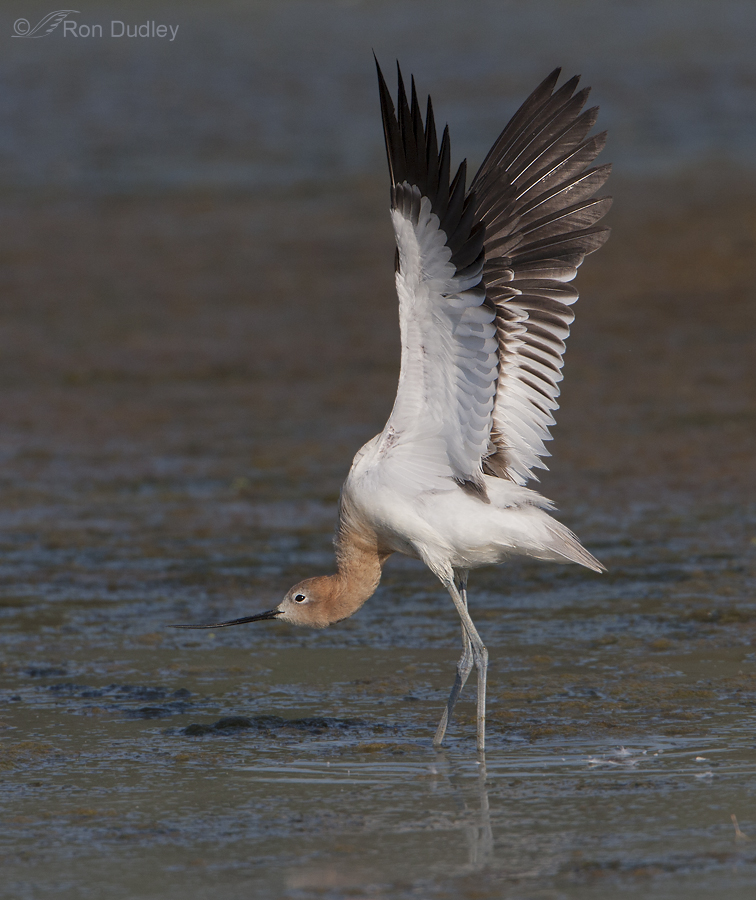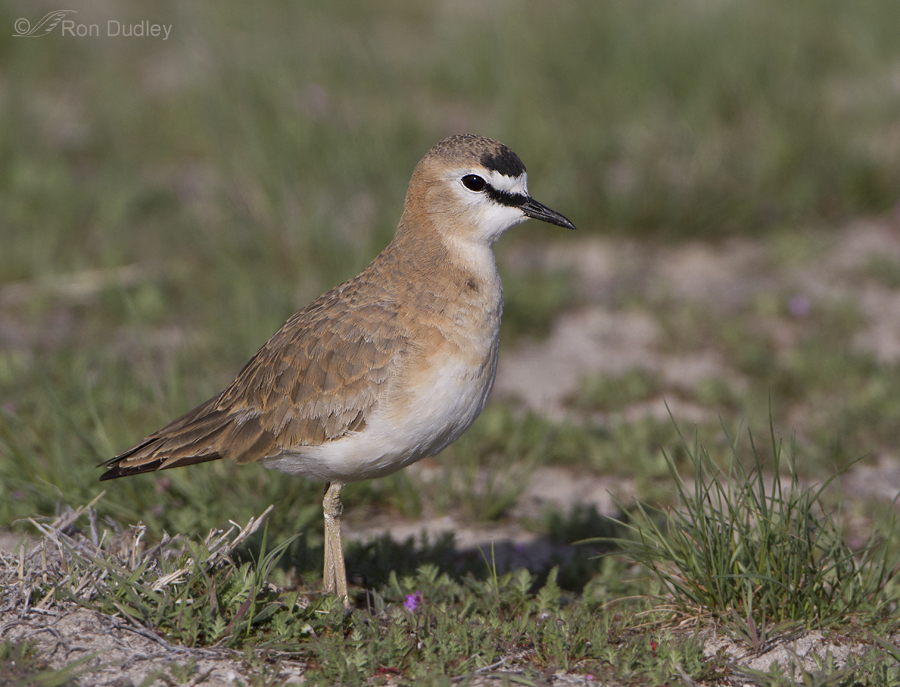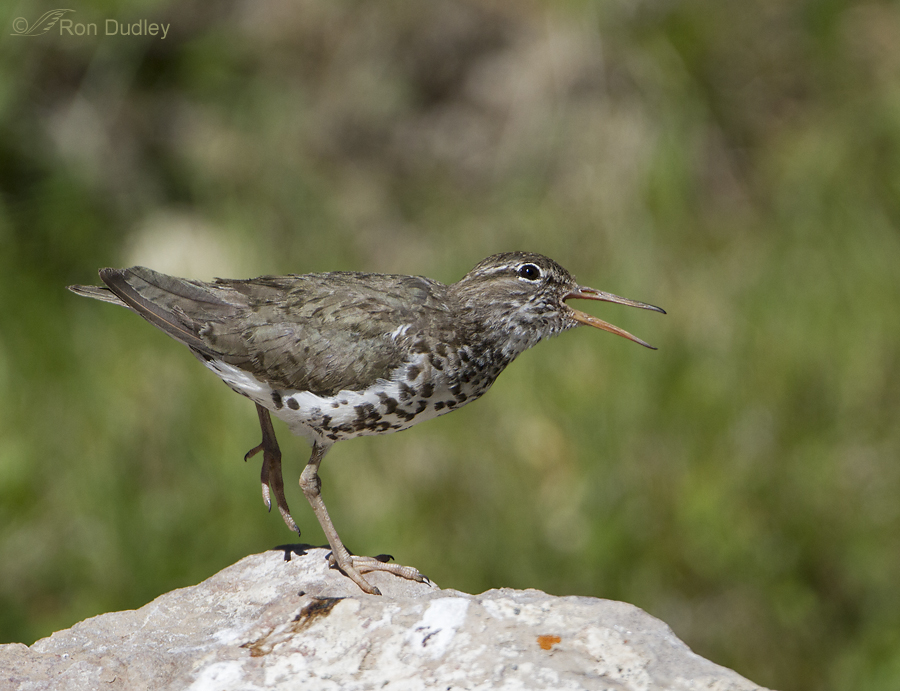Category: Shore Birds
Mountain Plovers – “Prairie Ghosts”
Spotted Sandpiper
Mating Black-necked Stilts
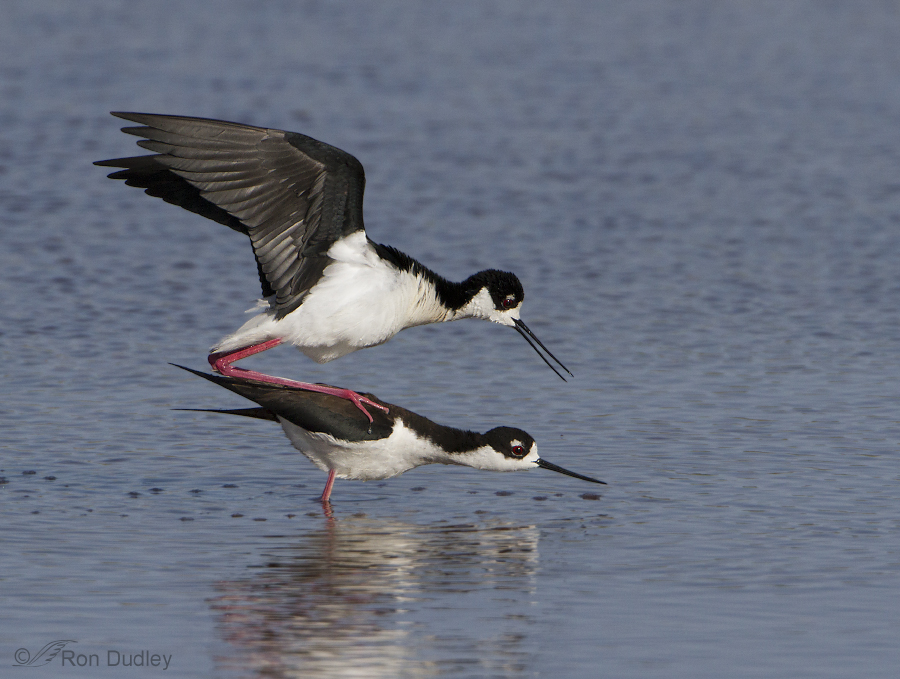
On a recent trip to Bear River Bird Refuge we were photographing American Avocets when I noticed some tell-tale preliminary behavior from a pair of Black-necked Stilts that told me that mating was imminent. So I set up on them and quickly changed my settings for more depth of field and almost immediately the action began.
Coyotes Like Eggs For Breakfast Too
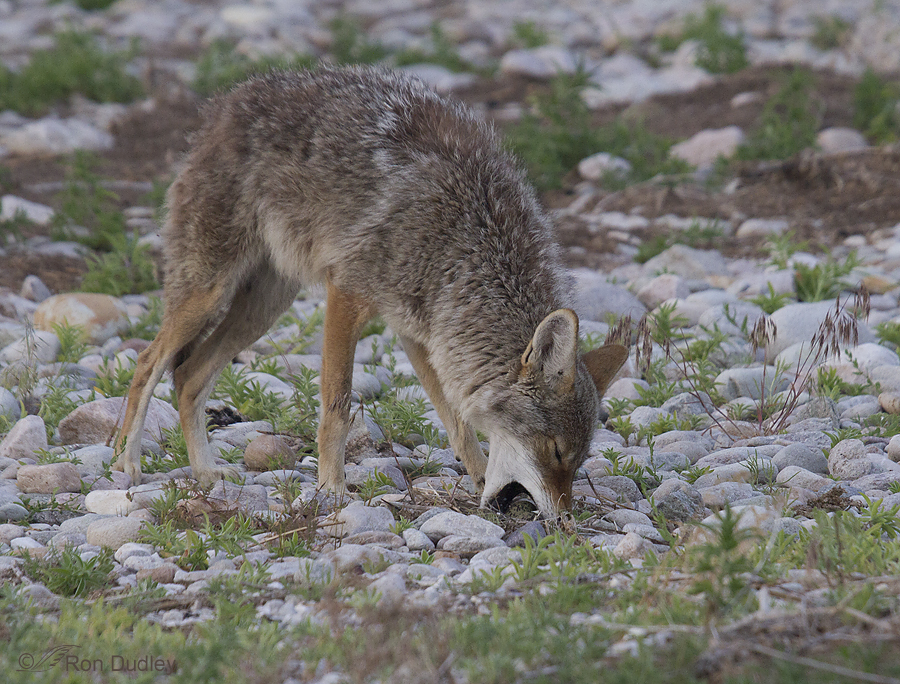
At 5:30 yesterday morning Mia and I almost decided to stay home rather than make the hour-long drive to Antelope Island because the area up north looked to be socked in with clouds (the “Farmington Curse” I’ve mentioned before) but after we picked up our traditional “shooting breakfast” (chocolate donuts) we chose to take our chances and go anyway – a choice I’m glad we made.
An Unusual Perspective On An Avocet In Flight
In my experience American Avocets are difficult subjects to get in flight because of their speed and erratic flight patterns. I’ve tried often but I sure don’t have many flight shots of the species that are very good. 1/4000, f/6.3, ISO 500, 500 f/4, 1.4 tc, natural light But I do like this one because of the sharpness of the bird, the position of the wings and feet, the nice eye contact, the pretty good exposure on a difficult subject and the somewhat unusual perspective with the viewer looking down on the bird that is flying mostly toward us. However I don’t particularly appreciate those two twigs behind the head so I’ve never posted this image before. Much as I dislike significant cloning, getting rid of those twigs has sorely tempted me more than once but in the end I just couldn’t do it (though I’ll admit to playing with it a little bit…). So I’m asking for critique on the image as presented. How much of a distraction do you think those two twigs are? Sometimes I become obsessed with imperfections (as several of you have pointed out on previous posts) and can’t see the forest for the trees. Perhaps the twigs aren’t as much of a problem as I think they might be. But either way, please be brutally honest. Thank you in advance for any thoughts on this you’d be willing to share. Ron Note: There are conflicting visual cues on this image for rotation. One would expect the twigs in the background to be vertical but when I rotate…
Highs And Lows – Killdeer And Bicycles
Yesterday morning didn’t begin well. I was up at 4 AM to give me time to finish my daily blog post so I could leave for Antelope Island by 6 to take advantage of the early morning light on one of those relatively rare recent days where no morning clouds were forecast. After an hours drive to get there I discovered that most of the island was closed to vehicular traffic to accommodate the Collegiate National Cycling Championships (unannounced on the Antelope Island State Park Facebook page). I made one pass of the north loop road and headed for home – an unhappy camper. But we decided to pay Farmington Bay an impromptu visit on the way home and I’m glad we did. We were able to visit with a friend we hadn’t seen in many months who we found walking the refuge road (a regular routine that she enjoys) and I got some Killdeer images that may turn out to be some of my favorites of the species in some ways. This photo is an example. 1/2500, f/7.1, ISO 640, 500 f/4, 1.4 tc, natural light Admittedly, it’s not a very dynamic shot – no interesting behavior and the pose is unremarkable (though perfectly acceptable). But I like the rock it chose to perch on, the light angle was good, it’s a very small crop so the detail is excellent (especially in a larger version) and I simply love the background. So thank you Mr. or Ms Killdeer (and friend Carol) for improving my mood, which was considerably better from Farmington to home than it had been from the island to…
A Pleasant Surprise Amongst The Flowers
Parts of Antelope Island are simply covered with tiny purple flowers right now and I often look for opportunities to photograph birds in such a setting.
Mountain Plovers Revisited
As some of you know, 10 days ago we found a pair of Mountain Plovers on Antelope Island. These plovers are rare in Utah, the few that are seen here are on their way to Montana, Wyoming and Colorado to breed so after a day or two these birds were gone. But they sure created a buzz in the birding community while they were here.
Mating Rituals Of The American Avocet
The moment I pulled up on this small pond at Bear River Migratory Bird Refuge last Friday I knew there’d be some opportunities for interesting behavioral shots. There were small groups of American Avocets and Black-necked Stilts that were excitedly chirping away and flying at each other in typical springtime behavior for these mixed flocks.
Amorous Avocets
Having witnessed the rituals of avocets mating many times before I knew what was about to happen when this female laid her bill down on the water’s surface and presented herself to the male. This time I got the shot. So often in the past they’ve had their backs to me when it happened.
Mountain Plovers On Antelope Island – Yes, Here In Utah!
As I reported on my last post, Mia and I found two Mountain Plovers on Antelope Island yesterday. They’re rare in Utah and I had never seen the species before, even in my travels to Montana and Wyoming where they’re more common. It was a very exciting day.
Killdeer Chick With An Extra Dose Of Personality
Well, yesterday may have been the first day of spring but so far I’m not impressed – it’s been dreary and wet and it’s supposed to be very cold through the weekend. I’ll even have to turn the heat on in my de-winterized camping trailer to keep the plumbing from freezing, Ugh… So I’ve been stuck in the house and was going through some older images when I came across this series of a very young Killdeer chick at Farmington Bay WMA. It was in the grasses near a parking lot and it was just as curious about me and my pickup as I was about it. 1/800, f/8, ISO 400, 500 f/4, 1.4 tc, natural light, not set up or called in I’d taken a few shots of this chick just after the sun came up but it was so buried in the grasses that the images weren’t very good but when I came back to the parking lot 51 minutes later it was in an area where the grasses weren’t quite as thick. At first it just watched me and didn’t do much. One of the parents was nearby but neither bird seemed nervous about my presence in my vehicle. 1/500, f/11, ISO 400, 500 f/4, 1.4 tc, natural light, not set up or called in And soon it walked closer to me to check me out. 1/500, f/11, ISO 400, 500 f/4, 1.4 tc, natural light, not set up or called in Then it decided to do some posing for…
Anticipating An American Avocet Behavior
Anticipating behaviors is often crucial for nature photographers and that’s particularly true when your subject is a lightning-fast bird. Most of us don’t need any more images where the wings have been cut off in the frame or the bird is soft due to lack of shutter speed or poor focus tracking of the bird at take-off. The American Avocet in breeding plumage is an especially lovely subject with its long recurved bill, bluish legs, cinnamon head and neck and the black and white chevron pattern on its back. But you don’t see many quality flight or take-off images of the species, partially because their flight tendencies are fast and erratic. Like many birds, avocets routinely perform single wing and leg stretches. These stretches occur when the bird is at rest and at ease. They stretch like this in the water… and on land. But this single-wing/leg stretch is not an indicator of nervousness or a precursor of take-off. Neither of the birds in these two images did so immediately after the stretch. 1/1000, f/8, ISO 500, 500 f/4, 1.4 tc, natural light, a sliver of canvas added for composition But when you see this two-winged wing stretch, expect imminent take-off. A few seconds later this bird did just that but it took off away from me and I deleted the images. Another two-wing stretch. And almost immediately after the wings came down… the bird took off. It’s not a good shot because of the angle of take-off but it illustrates my point. Here’s what Birds…
The Incredibly Long-legged Black-necked Stilt
The Black-necked Stilt is one of the more easily recognized birds in North America. With its shiny black wings and back opposed by the whites of the breast and underparts and its long, bright red legs it is unlikely to be confused with any other species within its range. 1/1000, f/11, ISO 400, 500 f/4, 1.4 tc, natural light But in my experience most observers are unfamiliar with the differences between males and females. Though the sexes are similar it’s relatively easy to tell them apart when they’re in breeding plumage. The back and scapulars of the male are a solid, shiny black while the female has a noticeable brown tone in those areas. The legs of the female are also shorter than those of the male. 1/1250, f/8, ISO 400, 500 f/4, 1.4 tc, natural light The iris of both sexes is red though it is more brightly colored in the male. Here the pupil is dilated to a relatively large size so the colored iris doesn’t take up much of the eye. I’ve found that in photos it can be difficult to get the eye color to show so it often appears solid black. 1/2000, f/6.3, ISO 400, 500 f/4, 1.4 tc, natural light But perhaps the most unique feature of the Black-necked Stilt is those incredibly long, ruby-red legs. Their legs are longer in proportion to their bodies than any other bird except flamingos, accounting for one of their common names – daddy longlegs. Stilts have partially webbed feet…


